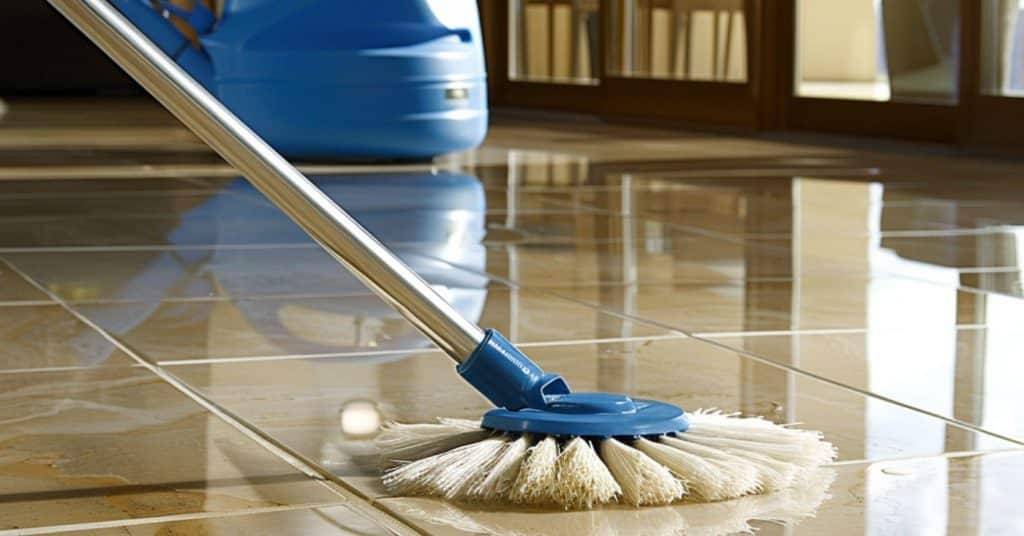In the quest for a sparkling home, we often find ourselves at a crossroads: deciding between regular cleaning and deep cleaning. While many of us relish the comfort of a freshly tidied space, understanding the distinction between these two services is crucial for maintaining our sanctuary’s cleanliness and our peace of mind.
Regular cleaning keeps our living spaces presentable and hygienic through routine tasks, but there comes a time when every home needs the thorough rejuvenation that only a deep clean can provide.
Choosing between regular and deep cleaning services can seem daunting, especially when trying to balance cost, convenience, and the level of cleanliness desired. Regular cleaning is designed to maintain a level of cleanliness around the house with scheduled visits, whereas deep cleaning delves into those often-neglected nooks and crannies, eradicating germs and grime for a truly fresh start.
Let’s dive deeper into the nuances of each service to help you make the best decision for your home.
Understanding Regular House Cleaning
Tasks Included in Regular Cleaning
Diving into what’s covered under regular house cleaning, we find it’s all about keeping your home spick-and-span through consistent effort.
Regular cleaning involves chores you’re probably already familiar with – think vacuuming the living room, dusting shelves, and making sure the bathroom shines. Floors get a good sweep and mop, while kitchen counters lose their crumbs and spots.
We also tackle those mirrors and windows, ensuring they’re streak-free. It’s pretty much giving your home the love it needs to stay welcoming and comfortable. But, let’s not forget, it’s also about zapping potential germ havens, so we’re talking disinfecting toilets and scrubbing down those often-used surfaces.
Frequency of Regular Cleaning
How often should this dance with the dustpan occur? Well, regular cleaning usually hits the sweet spot on a weekly basis. This rhythm keeps clutter at bay and ensures your home doesn’t start collecting those unwanted dust bunnies.
Plus, it’s a manageable schedule that won’t have you feeling overwhelmed. Think of it as the preventive care your home needs, much like brushing your teeth to ward off cavities. This way, your living space remains an oasis of calm instead of chaos.
And, of course, tweaking the frequency is always an option, depending on your specific living situation and how fast your home tends to attract dirt.
Diving Into Deep Cleaning
The Comprehensive Nature of Deep Cleaning
Deep cleaning goes beyond the surface, targeting hidden germs and dirt that regular cleaning skips. This type of cleaning digs into every corner, crevice, and carpet fiber. It involves washing walls, cleaning behind appliances, and scrubbing grout between tiles—tasks often overlooked during routine cleanups.
Deep cleaning also includes cleaning vents and beneath furniture, where dust and allergens tend to accumulate over time. Think of it as a top-to-bottom refresh for your home, making every nook and cranny sparkle.
Situations That Call for Deep Cleaning
Certain scenarios make deep cleaning not just advisable, but necessary. Moving into a new home, for example, calls for a comprehensive clean to start fresh. After a renovation, deep cleaning removes leftover dust and debris that can infiltrate every part of your house.
Seasonal changes, particularly spring and fall, are perfect times to schedule a deep clean, preparing your home for the season ahead or clearing out allergens.
See our guide on How Often Should You Deep Clean Your House for more tips.
And, let’s not forget post-illness cleanups; after someone recovers from being sick, a thorough cleaning helps sanitize the space, providing peace of mind for everyone. In these instances, deep cleaning ensures your living environment is not just clean, but thoroughly sanitized and welcoming.
Differences Between Deep Cleaning and Regular Cleaning
Cleaning Scope and Detail
In discussing the scope and detail involved, regular cleaning acts as the frontline defense against the accumulation of everyday dirt and grime. We like to think of it as the superhero that keeps clutter and surface-level dust at bay with its trusty sidekicks: the vacuum, duster, and mop.
Conversely, deep cleaning dives into the nooks and crannies, often bringing to light what’s been hiding undisturbed for months. It’s like a detective uncovering the hidden culprits – think scrubbing grout, washing walls, and ensuring every inch of the home receives some TLC. This thoroughness not only elevates cleanliness but transforms your space into a sanctuary of health and comfort.
Time Investment and Complexity
Let’s talk time investment and how complex these two types of cleaning are. Regular cleanings are akin to routine check-ups that don’t take up much of your calendar or energy.
A weekly sweep through your house can often suffice to keep things looking respectable. But here’s where it gets interesting – deep cleaning is the marathon to regular cleaning’s sprint. It demands more time, elbow grease, and attention to detail, sometimes taking a full day or more to complete.
The complexity of deep cleaning means engaging in a strategic battle against grime, requiring an arsenal of cleaning supplies and a hefty dose of patience. But fear not, once done, the sense of achievement and the sparkling results make it all worthwhile.
Deciding Between Deep Cleaning and Regular Cleaning
Evaluating Your Household’s Needs
Let’s face it, every house has its own flavor of chaos. Some of us live in a whirlwind of work, pets, and kids’ soccer games, which means crumbs under the couch and dust bunnies are part of the package. That’s where regular cleaning comes in, sweeping away the everyday messes and keeping the peace.
Then there are those moments, like when Aunt Martha announces an impromptu visit, where only a deep dive will do. Deep cleaning digs out the dirt you forgot existed, making everything sparkle like new. It’s all about balancing the hustle of daily life with those times you need your home to shine a bit brighter.
Weighing Time and Effort Against Benefits
Tackling a deep clean is like deciding to organize the garage: you dread starting, but love the results. It demands gear-up time, elbow grease, and a good playlist. If your weekends are already packed, squeezing in a session to scrub behind the fridge may well not be your jam. Regular cleaning, conversely, is like keeping up with laundry; it’s a rhythm that blends into your routine.
So, weigh the scales. Are you after that ‘wow’ feeling that comes from a fresher, crisper home? Or is maintaining sanity amidst a busy schedule your goal? Sometimes, handing off the heavy lifting to pros gives you the best of both worlds, saving your back and freeing up your calendar for life’s adventures – or at least a nap.
Implementing a Cleaning Schedule
Balancing Regular and Deep Cleaning Cycles
Finding the sweet spot between regular and deep cleaning doesn’t need to be a puzzle. Think of it this way: regular cleaning keeps the peace day-to-day, while deep cleaning dives into those nooks and crannies for a total refresh. We recommend setting up a weekly schedule for the usual dusting, vacuuming, and wiping down surfaces.
For the heavy-duty stuff, like tackling the oven or steam-cleaning carpets, marking your calendar for a comprehensive clean every three to six months does the trick. This approach doesn’t just maintain a clean home; it transforms it into a consistently welcoming space for everyone.
Seasonal and Special Occasion Cleaning
Ah, the seasons change, and so does our cleaning mentality. Spring naturally invites a thorough scrub-down, but don’t forget to summon your inner cleaning warrior in autumn too. Prepping your home for winter can be just as rewarding. And then, there’s the special occasion clean-up, a beast of its own.
Hosting a gathering? A deep clean beforehand sets the stage for a stellar event. And let’s be honest, the post-party clean-up, while less enchanting, is equally important. These are prime times for a deep clean, ensuring your home shines brighter than the top of the Chrysler Building, no matter the occasion.
See more guides:

